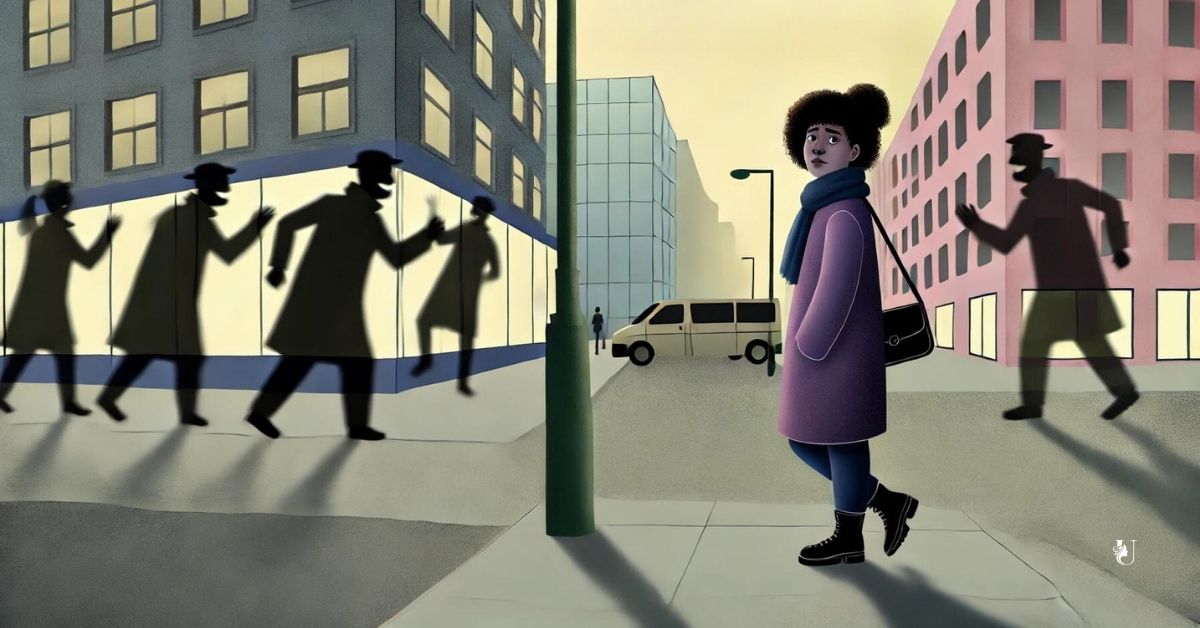The first time I was street harassed, I was 12 years old. In the ensuing 14 years, there has hardly been a day when I went out in public and did not experience some level of unwanted sexualized interaction with men – everything from stares that turn into leers, whistles, comments blurted in passing or shouted from the open window of a car to men following me, grabbing me, and threatening me. At 15, I was followed around a public library by a man who eventually tried to get my phone number – he turned out to be a teacher at a local school. At 19, I was followed along a dark street by a group of three men. Just a few months ago, despite my wedding rings and obvious discomfort, a man began hitting me in a grocery store.
Nearly every woman I know has a long history with street harassment, although for some women, street harassment starts much earlier in life – and for far too many women, it has much worse consequences. Street harassment, even when it’s dressed up as a compliment, is not acceptable behavior.
What is Street Harassment?
Each time women discuss street harassment and its effects on us, it is practically guaranteed that a cadre of men will appear to insist that their behavior is a compliment, that their approaches to women are respectful, and that women are simply overreacting. “I’d love it if random women gave me compliments!” is a common response. While many men do regard their own behavior as neutral or complimentary, the problem is that they are not considering women’s safety, experiences, or reactions to that behavior.
Also Read
Street harassment, although often referred to as catcalling, is any unwanted sexual harassment that occurs between strangers in a public space – whistling at women, unasked-for approaches, shouted compliments (or insults), telling a woman to smile, the invasion of a woman’s physical space, and touching a woman without permission are all part of street harassment. And yes, that includes an unsolicited attempt to get a woman’s phone number, no matter how politely it’s worded.
Carol Brooks Gardner talks about street harassment as public and gender-based harassment, which are activities that occur “on a continuum of possible events, beginning when customary civility among strangers is abrogated and ending with the transition to violent crime: assault, rape, or murder.” Many people who engage only in less violent forms of street harassment object to being placed on this continuum, but they refuse to acknowledge some very important factors about the power differences that are involved in street harassment.
Street Harassment and Power
When in public, there are always visible and invisible power structures at play that affect people’s comfort, safety, and willingness to engage with people they don’t know. For women as a group and women of color, black women, and LGBT women specifically, that power imbalance occurs due to the intersections of gender, race, and sexuality. Women move through the world knowing that we are likely to experience gender-based violence at the hands of friends and strangers. Even though interpersonal violence most often results from people we know, being approached by a strange man still results in heightened anxiety.
An individual man may see a woman and want to pay her a compliment – to him, this is a non-threatening behavior. To the woman he is targeting, he is the latest in a long line of men doing the same thing, possibly even the latest that day – but historically, some of those men have refused to stop at a compliment. To the woman he is targeting, he is an unknown quantity, and she will not be able to tell whether he is dangerous until he attacks. What feels like a mere compliment to the man feels like a potential threat to the woman.
This is the place where a lot of breakdowns occur when talking about street harassment. Men feel defensive about their past behaviors when approaching women in public and do not stop to consider the perspectives of the women they have been targeting. Even if their behavior is nothing more than a compliment, they refuse to consider how it is placed on Brook’s “continuum of possible events” and how that affects the ways in which women respond.
Street Harassment and Violence
Please note that this section of the article will discuss violence against women in some detail.
At the far end of the continuum is actual violence committed as a result of street harassment. This result is not nearly as uncommon as men who defend “catcalling” like to pretend it is. In my hometown, an 18-year-old woman was walking through a neighborhood in broad daylight when a car drove by, and the men inside shouted at her. Then they circled the block and did it again – and again, as their comments became increasingly sexual. Finally, the car stopped. One of the men got out and attempted to drag her back into the car with them. Although she was able to escape with only minor injuries, many women are not so lucky.
Mary Spears was shot and killed after refusing to give her phone number to a man she didn’t know. A woman in New York had her throat slashed by a stranger after she rebuffed his request for a date. In Florida, a man offered a 14-year-old girl $200 to have sex with him – and ran her over with his car when she said no. A woman in Germany, Tugce Albayrak, was murdered by a group of men after she attempted to stop them from harassing teen girls. These stories are a mere handful of examples of the violence committed against women who reject street harassers.
It is this reaction that women fear when strange men begin their approach. Most of these examples of violent acts began with men engaging in behavior indistinguishable from “compliments” – asking women for their phone numbers and trying to get a date. It’s when women refuse that things turn ugly, and women in public have no way of knowing which men will become violent until that happens. This is why street harassment is so stressful for women. A compliment is often not just a compliment, and expecting women to give every man the benefit of the doubt is simply counterproductive to women’s safety.
“How am I Supposed to Meet Women?”
One of the most common – and most self-centered – responses to discussions of street harassment is men who ask how, then, they are supposed to meet women. Although the response demonstrates a lack of consideration for women that should probably preclude them from getting dates at all, I want to address it briefly. In every anecdotal survey I have taken of my friends (and all the similar surveys I have seen discussed online), not a single couple was brought together because one person harassed the other in public.
Street harassment is not a good way to get dates in the first place. Even when it does result in a phone number, that is more often a response designed to help a woman get out of an uncomfortable situation than a sign of true interest. The vanishingly small numbers of relationships that may have developed out of street harassment are much less significant than the fear and frustration women are more likely to experience when randomly approached.
If you see a woman and cannot resist complimenting her, do so with the full awareness of the fact that your actions are unasked-for and invasive. Although it is certainly possible for men to respectfully offer a compliment and move on without expecting anything in return, men who attempt this should still acknowledge that they have entered into a situation where their behavior could unintentionally cause stress for another person.
Online dating exists for a reason. Ask your friends to introduce you to their nice co-workers. Join a hobbyist group that is interested in yours. All of these activities are significantly more likely to result in pleasant interactions with women than tossing off a comment at a stranger who is just trying to get from point A to point B.
Ending Street Harassment
Feminista Jones, a social worker, feminist author, and activist, tracks the violence that is committed against black women by husbands, boyfriends, and strangers. Her project #YouOkSis focuses specifically on street harassment aimed at black women, cisgender and transgender alike because black women are more frequently targeted for abuse in public spaces and more likely to be the target of violence. #YouOkSis is intended to offer women a place to share their stories of street harassment and empower people to intervene in ways that take the pressure off of the women who are being harassed.
There are also a number of other organizations that attempt to provide information on street harassment, resources for women who experience it, and education about why it is so dangerous. Two of these organizations include Hollaback! and Stop Street Harassment. The artist and activist Tatyana Fazlalizadeh has a series called “Stop Telling Women to Smile,” which “attempts to address gender-based harassment” through the use of public works of art “that speak directly to offenders.”
By raising awareness of the problem, demonstrating the frustrations women feel when being on the receiving end of these approaches, and offering resources for women and education for men, these organizations and activists are helping to create public environments where everyone can interact safely.
The simplest way to end street harassment, of course, is simply not to engage in it: let women move about in public as people rather than as objects for you to appraise and comment on or demand things from. Letting women go about their daily business in peace requires no effort from men other than learning to respect women’s space.













